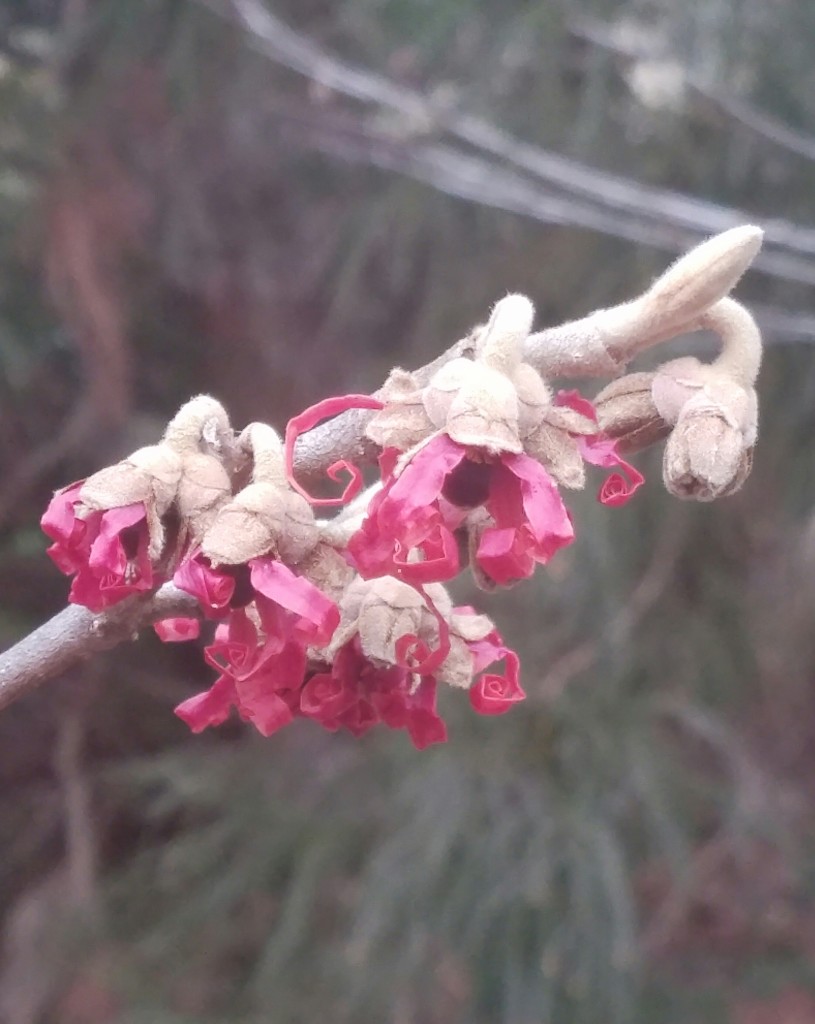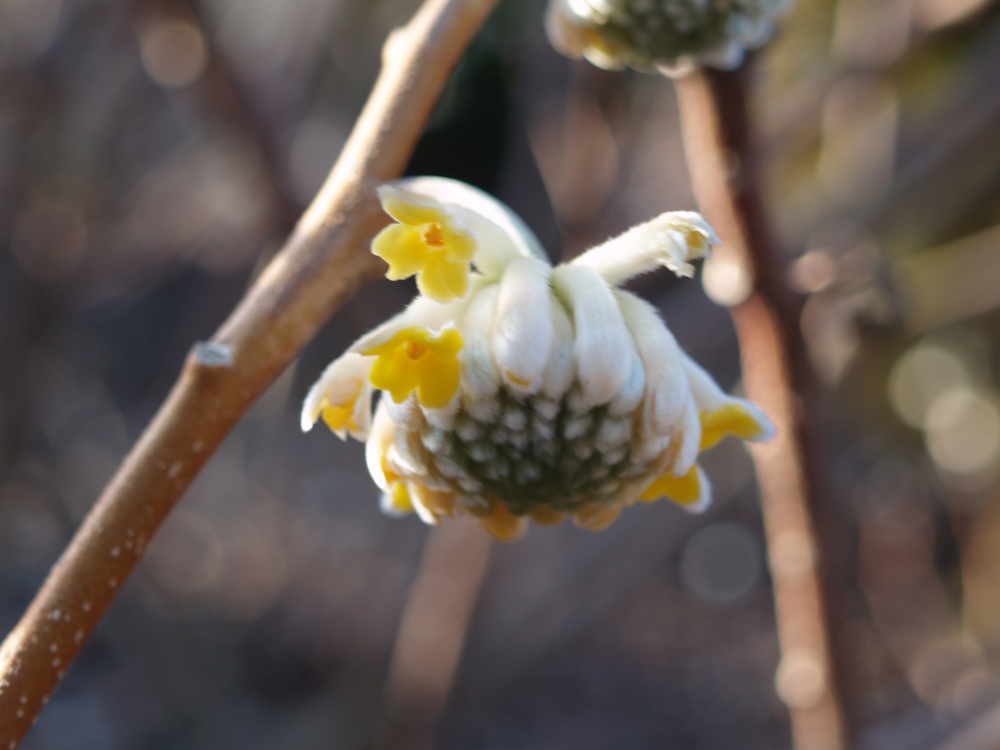In this first week of February, ‘Diane’ (below) and ‘Jelena’ witch hazels (Hamamelis x intermedia) are beginning to flower, and again I realize that I did not plant another ‘Arnold Promise’, as claimed, to replace an old timer lost a few years ago to ever increasing dampness along the southern border of the lower rear garden. Perhaps this newest witch hazel was unmarked, and certainly it was not flowering at the time, but whatever, I purchased the wrong plant, so now there is a second ‘Diane’ in the garden, which poses no problem except that space must absolutely be found for ‘Arnold Promise’.
While the Vernal witch hazel is a marvelous tall shrub with excellent fragrance, it is most distinguished by small flowers in January when little else is flowering besides the various mahonias (Mahonia x media) that are typically fading by mid month. Several attempts to purchase the late autumn flowering, native Common witch hazel (Hamamelis virginiana) have failed due to incorrect tagging, which is only occasionally a problem, but not unusual with confusion between Vernal and Common witch hazels that are similar in appearance.

The hybrid witch hazels (‘Diane’ and ‘Jelena’ in this garden, with hopes that ‘Arnold Promise’ can soon be added) display much larger flowers than the Vernal witch hazel, and often blooms will carry from early February until the first warm spell in March. With a diminished sense of smell I am in no position to compare scents of one to the other, but on any still winter afternoon there is no mistaking the fragrance as I walk through the rear garden. While this might not be a big deal in April or May, in the winter months flowers and scents are greatly appreciated.

In this so far mild winter, I again look forward to early flowers on paperbushes (Edgeworthia chrysantha), uncommon, but marvelous shrubs. After recent winters when temperatures dropped several times below zero, flower buds were lost and considerable dieback required severe pruning of branches. But today, I expect to see the first glimpse of color in the next week. Folks with keen senses note the pleasant fragrance of paperbush’s flowers, but this one escapes me. The flowers are more than enough to substantiate inclusion in the garden, though its wide spread will not work in many gardens. References note a tidy three by three (or four by four) feet spread and height, but several in this garden have grown to six feet tall with a spread of ten feet or more.

I have always wanted to grow witch hazel but I don’t think it would work in our winters.
Great shot of paperbush in full flower, don’t normally see that.
Paperbushes failed to flower following sub zero temperatures two and three years ago,but otherwise flowers are dependable beginning anytime from early February through mid March, depending on weather. This winter is looking like an average start time, probably the end of February or first week of March.